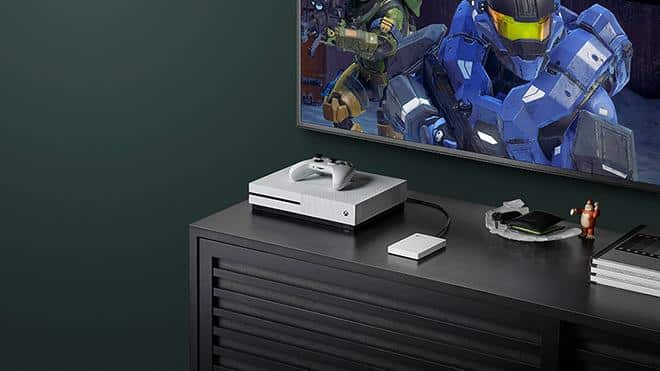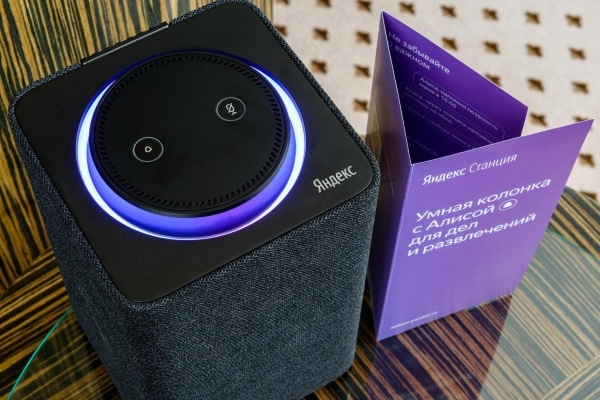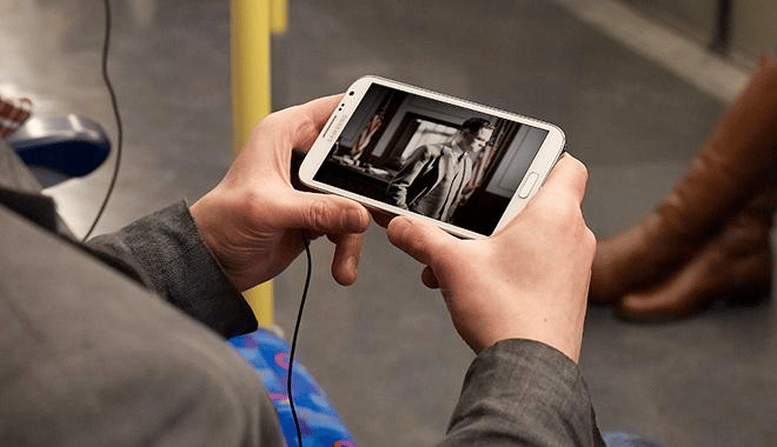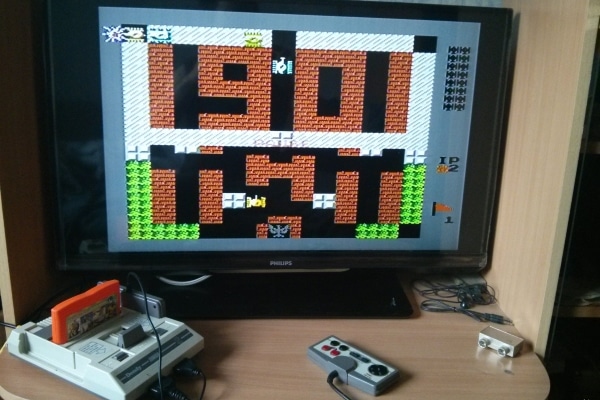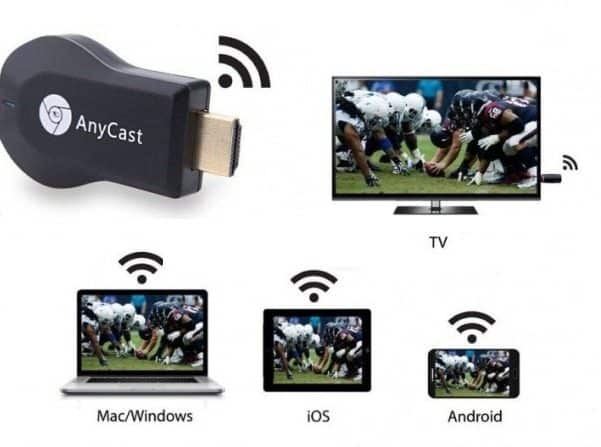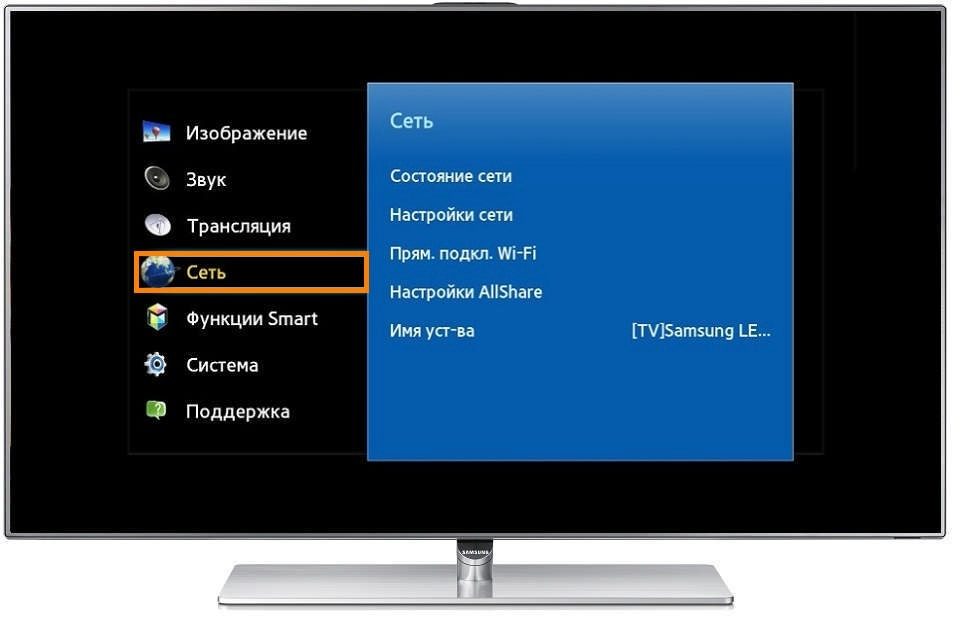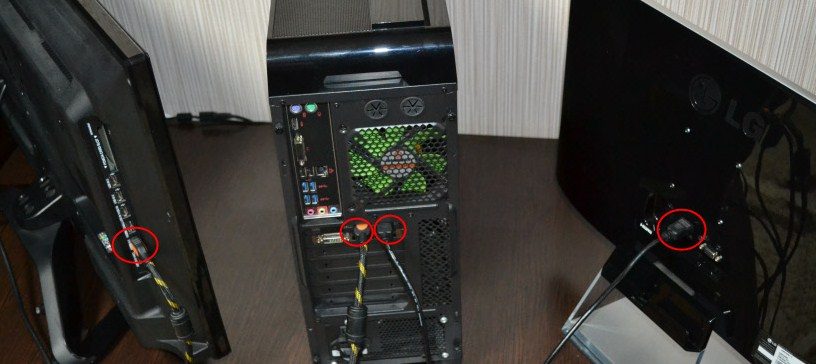Some TVs, especially those released in the early 2000s, do not have a Wi-Fi signal reception module. This means that the viewer does not have access to endless Internet content. In this case, an external device helps out – a Wi-FI adapter. Using additional equipment, the television receiver is connected to a wireless network.
- Functions of Wi-Fi adapter for TV and how it works
- Benefits and properties
- Main characteristics
- TV Compatibility
- Signal range and transmitter power
- Working frequency
- Signal standard
- Protection options
- Connection types
- How to make a choice?
- Popular manufacturers
- Popular models
- Connection and setup
- For Samsung
- For LG
- For Phillips
- Strengthening and improving the signal
- Connection problems
- Incorrect auto-tuning
- Problems with software or hardware
- Problems from the provider
Functions of Wi-Fi adapter for TV and how it works
Wi-Fi is a wireless network protocol that allows you to exchange signals without using wires. Wi-Fi refers to a type of LAN 802.11 IEEE protocol. The TV Wi-Fi adapter is designed to receive and transmit signals over a wireless network.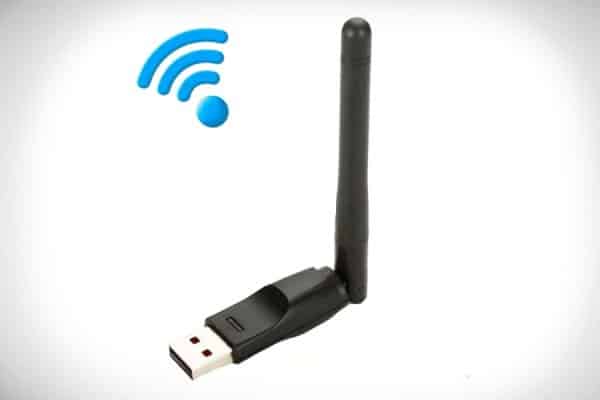
Smart TV is a term used by Samsung. In LG TVs, the Wi-Fi function is called web-OS, in Sony and Philips – Android TV, etc.
For the TV to work on a Wi-Fi network, it needs two devices:
- access point – a device that distributes a signal;
- adapter – a subscriber connected to an access point to provide communication with a TV.
Smart TVs do not need a Wi-Fi adapter. They have a built-in device for connecting to the Internet. The availability of the Smart TV function is usually indicated in the instructions or directly on the packaging box. All other TVs require additional equipment. Connection via wire is possible – coaxial or Ethernet. But this is unnecessary confusion, a violation of aesthetics and practicality. It is much more convenient to buy a Wi-Fi adapter. The device looks like a USB flash drive. Older TVs not all have a program for working with Wi-Fi adapters (some simply “do not see” the connected new device). In order not to buy such a TV, it is recommended to carefully read the instructions (or preview the information on the manufacturer’s web resource). The device works as follows:
- The digital signal received by the Wi-Fi router is recoded into a radio signal.
- Next, the router broadcasts the radio signals directly to the Wi-Fi adapter for the TV, which acts as a signal receiver.
- The adapter then converts the radio signal back to digital. After that, a video image appears on the screen.
Benefits and properties
A Wi-Fi adapter for TV is optional when watching TV. Everyone decides to buy it or not. Wi-Fi adapter properties and its advantages:
- no need to use traditional twisted pair and other cables for connection;
- synchronous work with computers, laptops, phones, other devices – through them you can send videos, photos, music videos, films to the TV screen;
- the ability to watch movies from the network on a large television screen;
- displaying the PC desktop on the screen;
- digital TV signal reception;
- control from a phone, tablet (but this function is not available for all models).
Main characteristics
When choosing an adapter, it is recommended to pay attention to the characteristics. The operation of all interconnected devices and, ultimately, the quality of the picture on the TV depends on them.
TV Compatibility
Quality devices are supplied in plastic or cardboard packaging. It indicates which devices the device is compatible with (TV manufacturers and models). There are models on sale that are positioned as universal. They just plug in and work properly. But many users note that after flashing the TV, such devices stop working and cannot be restored.
Signal range and transmitter power
The radius indicates the maximum distance that allows the TV and router to receive and transmit a signal. The range is affected by obstacles – each wall or piece of furniture is an obstacle to signal propagation (the more partitions, the weaker it is). By range, there are two types of Wi-Fi adapters:
- for open spaces;
- for a closed room.
The manufacturer always indicates the radius of action on the packaging. The unit of measurement is meters. Power is a kind of signal transmission stabilizer. The parameter alone does not give an unambiguous understanding of how good the device is. But in conjunction with the radius, it allows you to navigate which area is more suitable for a room. In a large apartment, it is better to buy a more powerful device – this is a guarantee of stable operation of the equipment. A weak adapter simply cannot handle the load. The signal will be weak, if not completely inaccessible.
Working frequency
One of the most important characteristics when choosing an adapter. Its operating frequency must exactly match the frequency of the router. Frequency Compliance Table with Operational Standards:
| IEEE 802.11 standard | Frequency, GHz | Year of adoption of the standard | Bandwidth, Mbps |
| B | 2.4 | 1999 | eleven |
| A | 5 | 2001 | 54 |
| G | 2.4 | 2003 | 54 |
| N | 2.4 | 2006 | 300 |
| N Dual Band | 2.4-5 | 2009 | 300 |
| Ac | 5 | 2010 | 1,300 |
Signal standard
There is a column in the above table that indicates the bandwidth of the adapter. In fact, this is the speed of wireless information transfer. The standard specifies the maximum throughput of the adapter, and it can differ significantly from the real values. The reason for the discrepancy is the discrepancy between the ability of the equipment to exchange information and its actual operation.
A variety of factors affect the passage of a Wi-Fi signal, in particular, the operation of sources of electromagnetic waves – from smartphones to microwaves and dishwashers.
Protection options
The operation of the router goes far beyond the apartment; without protection, people living in the neighborhood can use it. Actions will negatively affect the speed and stability of the signal. There are options for reliable protection against tampering. The simplest and most accessible to an ordinary user is device coding. To prevent Wi-Fi theft, follow these steps:
- Find out the IP address of your router.
- Come up with a unique name for your home network.
- Enter a strong password.
Manipulation allows you to provide minimal protection for your home Smart TV. A more reliable barrier is to turn the network into stealth mode by enabling information encryption via WEP, WPA and WPA2 protocols. In self-execution, a similar procedure is available for advanced users. Actions are taken through the settings of the router. But it is better to use the services of a specialist.
Connection types
Manufacturers offer Wi-Fi adapters with different connector options. Moreover, each has its own connection characteristics:
- Via HDMI port. This connection option is ubiquitous. It is these connectors that are installed in a variety of devices – from smartphones to televisions. The presence of HDMI allows you to easily connect devices to each other. HDMI was designed specifically for the transmission / reception of high definition multimedia. Another plus is the high transfer rate.
- Via USB port. A widespread option. A USB port can be found in almost any technique – tablets, laptops, etc. Wi-Fi adapters designed for connecting to a USB connector are usually very compact and look like a USB flash drive.
- Via PCMCIA slot. The option is already considered morally obsolete. It is found and used quite rarely. Such connectors are available in older TVs (and even then not in all models).
How to make a choice?
When choosing a Wi-Fi adapter for your TV, it is important to pay attention to the maximum possible number of parameters and specifications. This will help you to find the device that is best suited for your specific conditions and requirements. What to look for first of all:
- Compatible with TV. But it is better to take an adapter from the same company as the TV. Then there will definitely not be any connection problems.
- Do not take an adapter of an unknown brand or too cheap. In this case, low image quality, disconnects, video interruption during viewing and even heating of the equipment are expected.
- Simultaneous availability of HDMI and USB connectors. The ability to vary the connection will provide the highest image quality possible.
- Specifications. Power, range, frequency and other parameters must be in accordance with specific conditions and requirements.
Popular manufacturers
Wi-Fi adapters today are produced by many companies, including leading electronics manufacturers. The most famous of them:
- Xiaomi. A Chinese brand known for its inexpensive and quality products. It produces many models of inexpensive Wi-Fi adapters in various colors and small sizes. More often with USB connectors.
- Asus. Taiwanese brand. The company’s Wi-Fi adapters usually work with the most popular interfaces.
- LG. South Korean brand. Wireless adapters support all standards and transmit information at speeds comparable to cable transmission. LG produces adapters not only for routers, but also for smartphones.
- Samsung. This South Korean brand offers the widest range of Wi-Fi adapters. All devices feature smooth operation and high power levels.
- Tenda . The range of wireless adapters of the Chinese brand is distinguished by a variety of shapes. Most of the products have a minimalistic design and black and white colors. Most often they have a connection type via a USB port.
Popular models
The stable operation of the wireless connection between the router and the TV depends on the quality and compatibility of Wi-Fi adapters. To minimize the risk of problems, it is recommended that you select devices from well-known brands with a good reputation. The best Wi-Fi adapters for TVs according to users:
- Alfa Network AWUS 036 ACH . Connected via USB connector. Transmits a signal at a speed of 867 Mbps. Inexpensive, visually attractive device, with up-to-date encryption methods. The adapter supports almost all popular operating systems and works under any conditions. It has a large range – many times more than that of competitors. Price – 3,255 rubles.
- Tenda U9. Miniature yet powerful adapter. Suitable for apartments over 100 sq. m. Works flawlessly. Compatible with the Smart Home system. The signal transmission rate is 633 Mbps. Connection is via a USB connector. Price – 1,300 rubles.
- Alfa Network AWUS036NHA. The adapter features high sensitivity, quick and easy setup. Can transmit signal over long distances through solid walls. The transmission speed is 150 Mbps. USB connection. Price – 3 300 rubles.
- ASUS USB-AC54 B1. Compact USB 3.0 adapter. The maximum transfer rate is 1 267 Mbps. Price – 2,400 rubles.
- BSP WU-200. Universal Wi-Fi adapter. Suitable not only for TVs, but also for projectors. Has advanced customization options. Price – 4,990 rubles.
Connection and setup
There is nothing complicated in configuring Wi-Fi adapters. Any user can handle it. It is conducted according to one algorithm, but some brands have their own nuances. To connect your TV to your network wirelessly, you must have:
- working internet;
- router;
- Wi-Fi adapter.
For Samsung
Before connecting the device, take a look at the official website of the manufacturer samsung.ru for a list of supported TV brands / models. You can also read detailed instructions for quick connection there. Algorithm:
- Insert the adapter into the TV socket – after that the device is activated.

- Set up the network by pressing the Menu button on the remote control.

- Select “Network” and then “Network Settings”.

- The TV, not detecting a wired connection, offers to establish a wireless connection. Click the Start button.

- Select the home network distributed by the router, connect, enter the password, click the “OK” button.

- After the performed manipulations, the TV checks the established connection and, if everything is fine, notifies of the successful establishment of wireless communication.

For LG
As in the previous case, it is recommended to go to the official website of the manufacturer lg.ru. Check here that the adapter you are purchasing is suitable for your particular TV model. Adapter setting:
- Insert the device into the connector – it will activate without assistance.
- Further, the connection algorithm will depend on the TV model. Usually it is enough to go to the settings, select the item relating to the network. Then you need to select your home network and type in a password.
For Phillips
In principle, the configuration of Phillips Wi-Fi adapters is no different from the algorithm for Samsung and LG. There is a slight difference in the names of menu items, but all actions are intuitive and do not raise questions. Approximate sequence of actions when setting up Phillips adapters:
- “Menu”;
- “Installation”;
- “Wired and wireless networks”;
- “Wired or Wi-Fi”;
- “Connecting to the network”;
- “Wireless” .;
- the last action is to enter a password and connect.
Visual instructions on how to connect a TV to the Internet:
Strengthening and improving the signal
It happens that the adapter is already connected, and the video is broadcast poorly. The image is interrupted, freezes, slows down. Such signs indicate a drop in transmission speed. How to improve the signal:
- Move the router closer to the TV.
- Remove obstacles in the signal path. It is especially important to rearrange the equipment that generates interference – microwaves, telephones, etc.
- Open the router settings and then the wireless network. Select the required country for the device to detect communication channels by itself. In this case, Wi-Fi will not interfere with standard telephone waves. If the adapter does not have a country setting, set the mode to 1, 3 or 5.
- Turn the antennas of the router towards the TV. Set them so that they create a 45 degree angle with the floor surface.
Connection problems
It is not always possible to successfully connect and configure the adapter the first time. It happens that messages appear on the screens – “network error” or “no Internet connection”. The elimination of the problem is preceded by a search for the cause of its occurrence.
Incorrect auto-tuning
If of all the devices “powered” by home Wi-Fi, only the TV has problems, most likely, it has incorrect auto-tuning. To fix the problem, you need to enter the Google DNS address in the appropriate field. Procedure:
- Press the “Menu” → “Settings” button on the remote control. Go to the “Network” → “Connection to Wi-Fi” section.

- Then go to “Advanced settings” → “Change”. Uncheck the box next to “Automatic” and enter the numbers: 8.8.8.8. Click on the “Connect” button

- If the problem really arose due to autotuning, then after the work done, you will see a message on the TV screen that the Internet is successfully connected.
Problems with software or hardware
As you use Smart TV, the equipment may display errors that cause problems when connecting the TV to the Internet. To prevent them, you need to proactively update your software. Software update methods:
- connecting the internet connection cable;
- via a wireless network;
- using a flash drive or using a hard drive.
 If there is no Wi-Fi connection, the flashing is performed via a wire or a USB flash drive. Manufacturers usually publish instructions for updating software on their websites.
If there is no Wi-Fi connection, the flashing is performed via a wire or a USB flash drive. Manufacturers usually publish instructions for updating software on their websites.
When updating the equipment software, it is worth keeping in mind that the use of third-party firmware leads to a denial of warranty service.
Problems from the provider
The absence of a signal can be observed due to incorrect operation of the provider’s equipment. To clarify the issue, call the service provider and clarify whether any work is underway, whether there is a global breakdown. When it is impossible to make a call, you can check the signal quality on your own:
- Pay attention to the operation of the router.
- If the WLAN light is on, but the WAN / DSL light is off, this means that the router is working, but there is no signal from the provider to it.
- Turn off the router for 10 minutes.
- Turn on your router.
If the problem persists, it’s clear that the provider has a problem. You just have to wait for the ISP to fix the problem. A Wi-Fi adapter is a miniature, rather inexpensive little thing that allows you to completely solve the problem of connecting the Internet to a TV. It is possible to choose a device for any brand of TV. The main thing is not to rush, but to understand the functionality, technical characteristics of the adapter and the model compatibility of the transmitting and receiving equipment.

